Place Name of the Week - Bölin da Kye
Published: 23 October 2020
Old Norse bú, oxi, kálfr, kýr and kví village, farm and field names all relate to cattle.
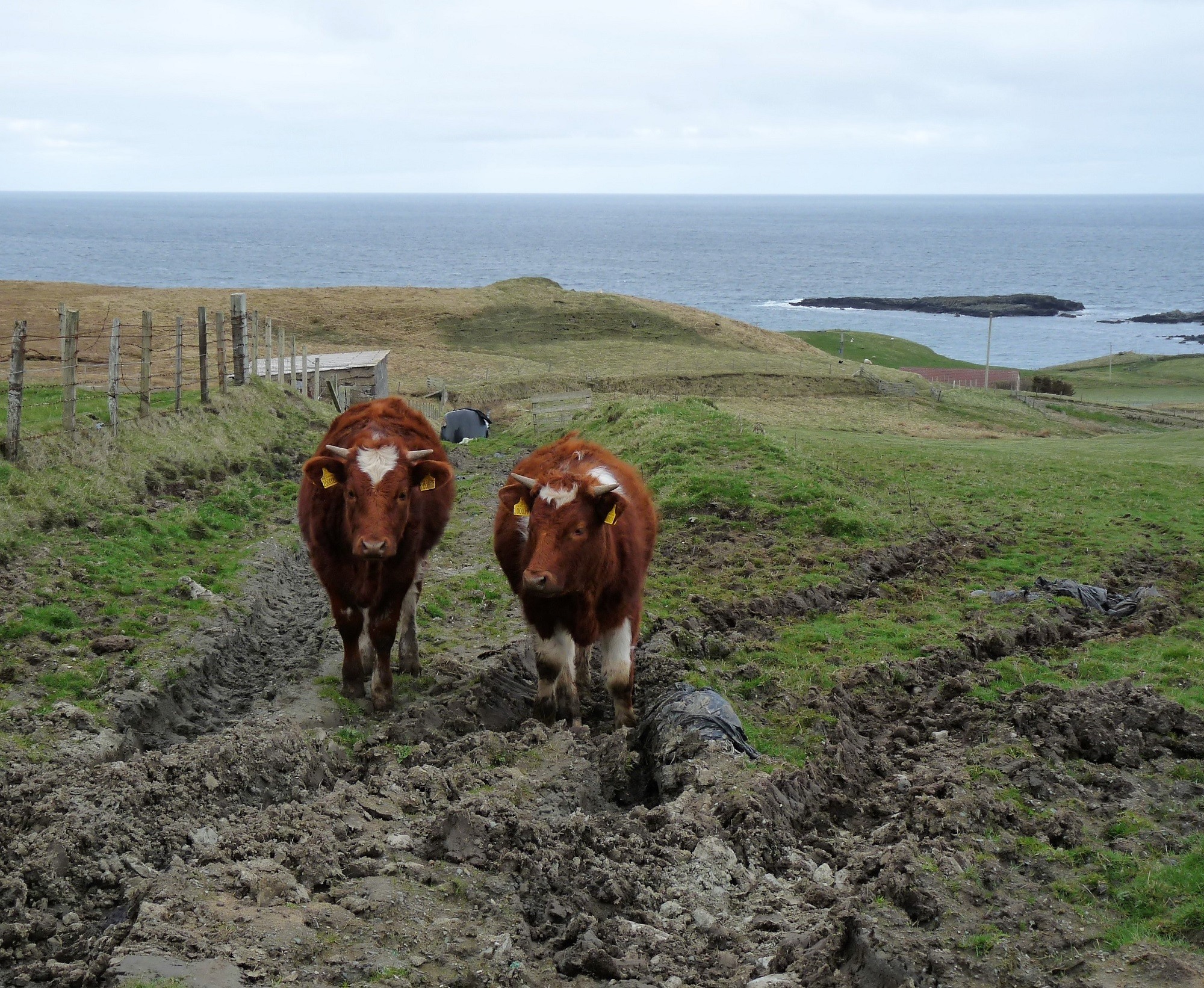
Young kye at the top of Da Bulie Rod, Ocraquoy
Bú, stock of cattle, gives Buness in Unst and Fair Isle, Buster, Yell, Bulie in Cunningsburgh and Levenwick, Buskord, Northmavine, Buvelti in Eshaness and Aithsting, Virdabu, Cunningsburgh and Bugarth in Yell. Búgarðr, cattle enclosure, often describes small, cultivated pieces of land: Da Bogerstegs (Westsandwick and Hamnavoe, Yell), Da Bogersflets (Unst and Sound), Da Bogersdelds (Weisdale and Unifirth), Buggery (Brig o Waas), Buggesta (Fladdabister), and Buggard(s) - a common field name throughout Shetland.
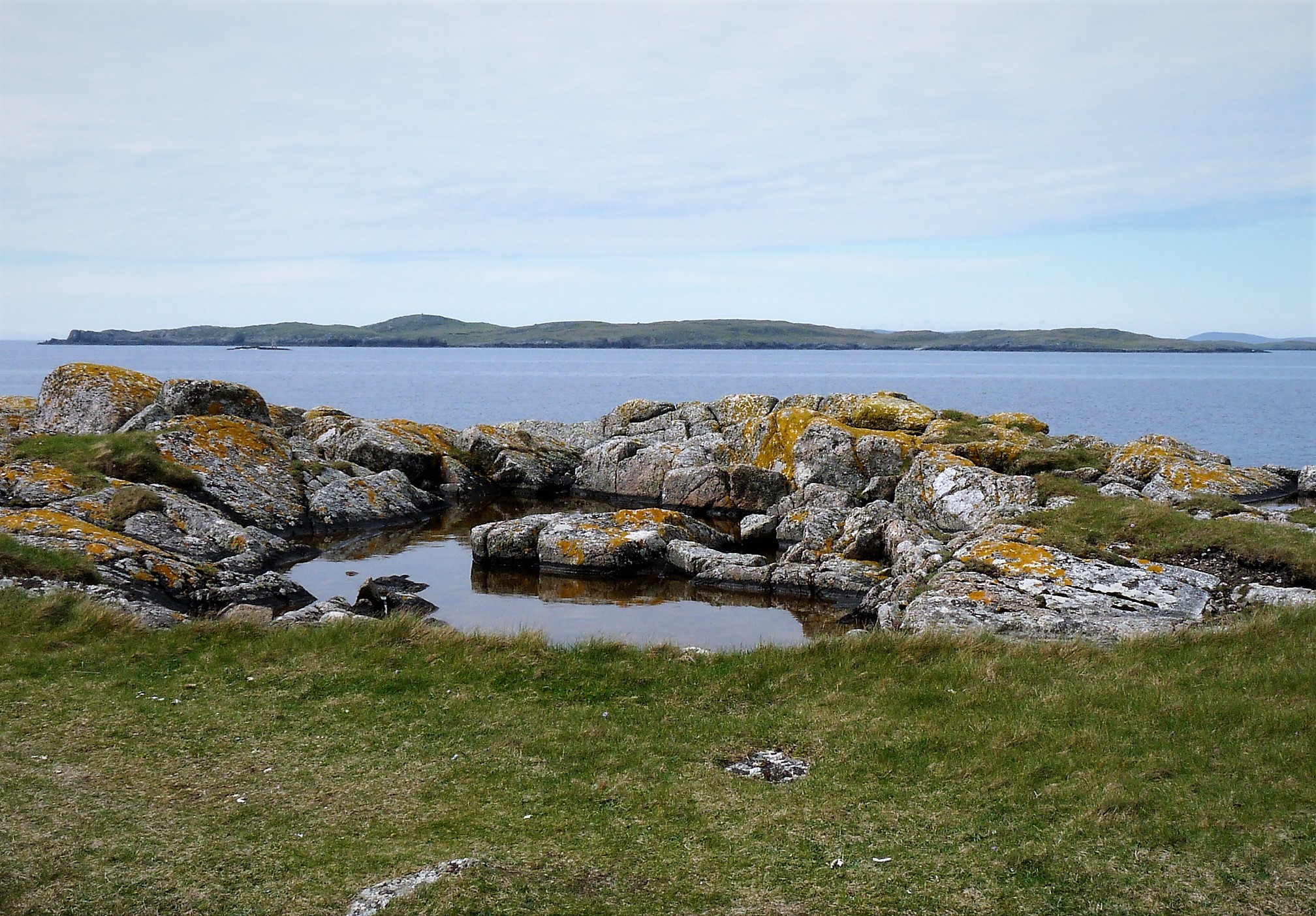
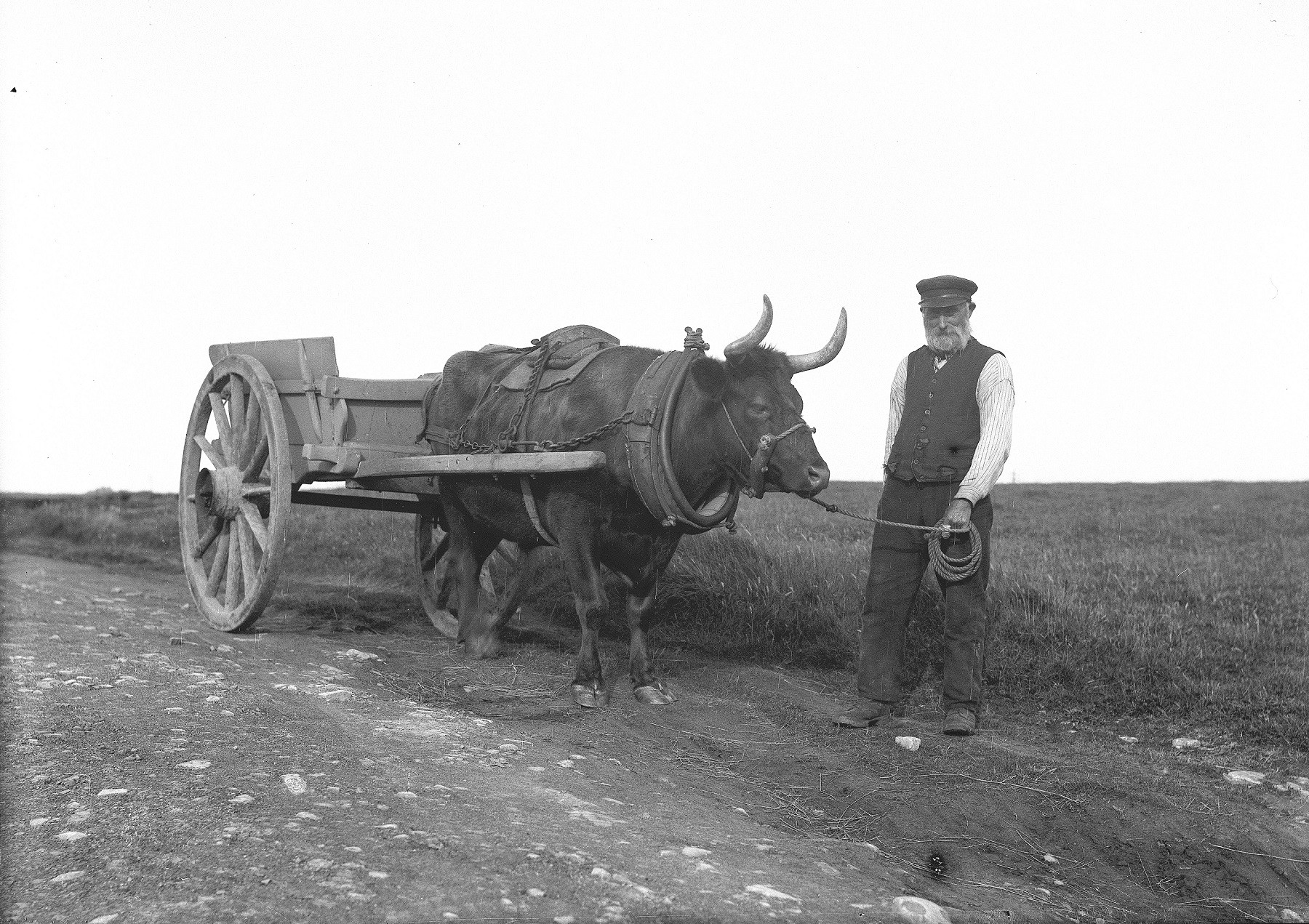
Fair Isle (J D Rattar, Shetland Museum & Archives R00041)
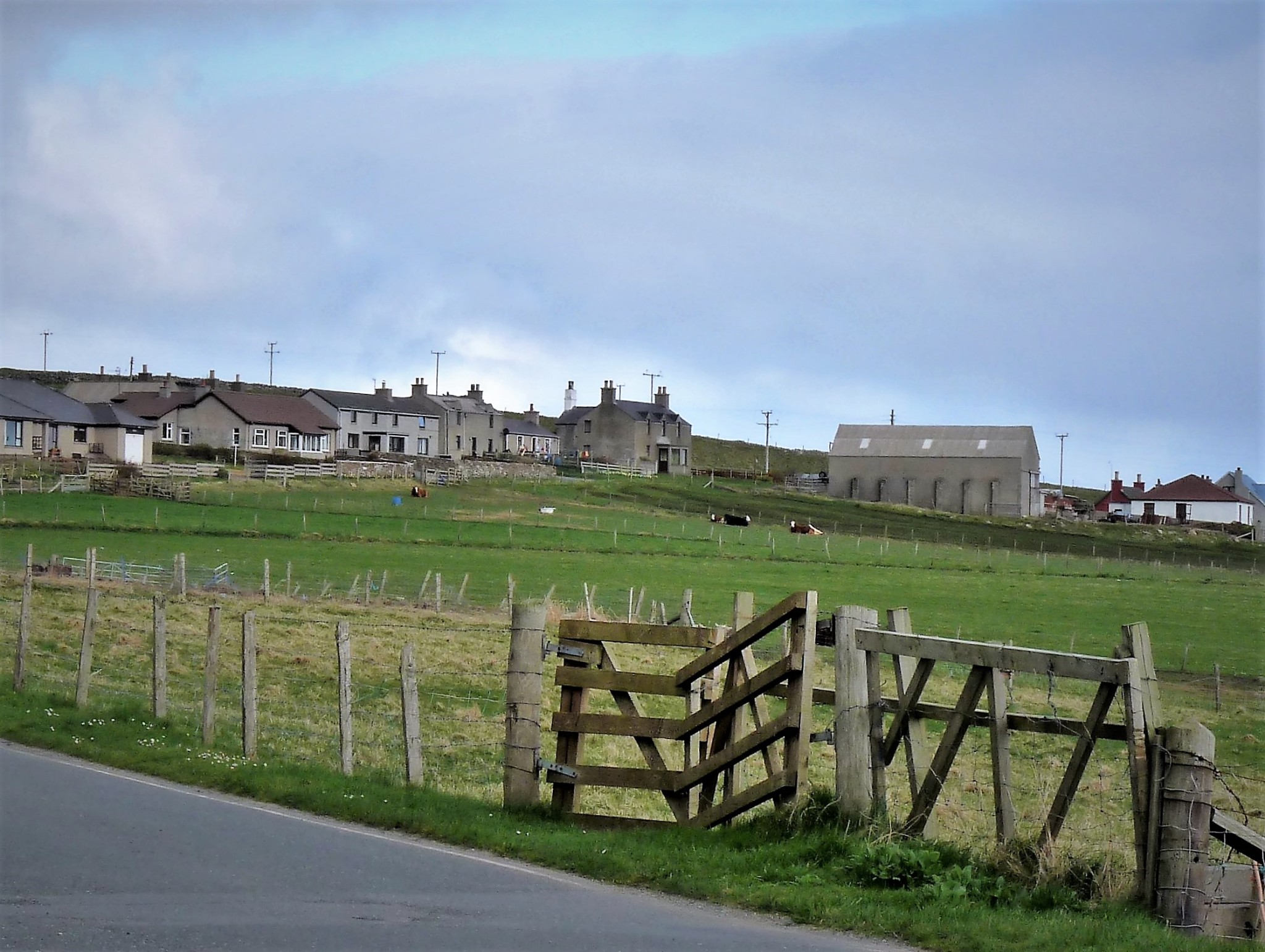
Oxensetter in Northmavine nestles below Collafirth Hill and, like other setter names, it means summer pasture – in this case for the oxen. Further oxi names are Oxnigarth (Yell), Oxna Leog (North Roe), Oxnaböl (Delting), Oxna Gates (Foula), Da Joknaflots (Sandsting), Oxen Punds (Gulberwick), Ox Leog (Cunningsburgh) and Exnaboe (Dunrossness), locally known as Bö. This area must have provided good grazing for cattle as a nearby farm was called Oxinasta or Occinster. Names for enclosures include Yoxen Yard and Yoxnapund (Waas) and Ox Pund (Fladdabister). Coastal names are the island of Oxna off Scalloway, and several Oxna or Oxni Geos.
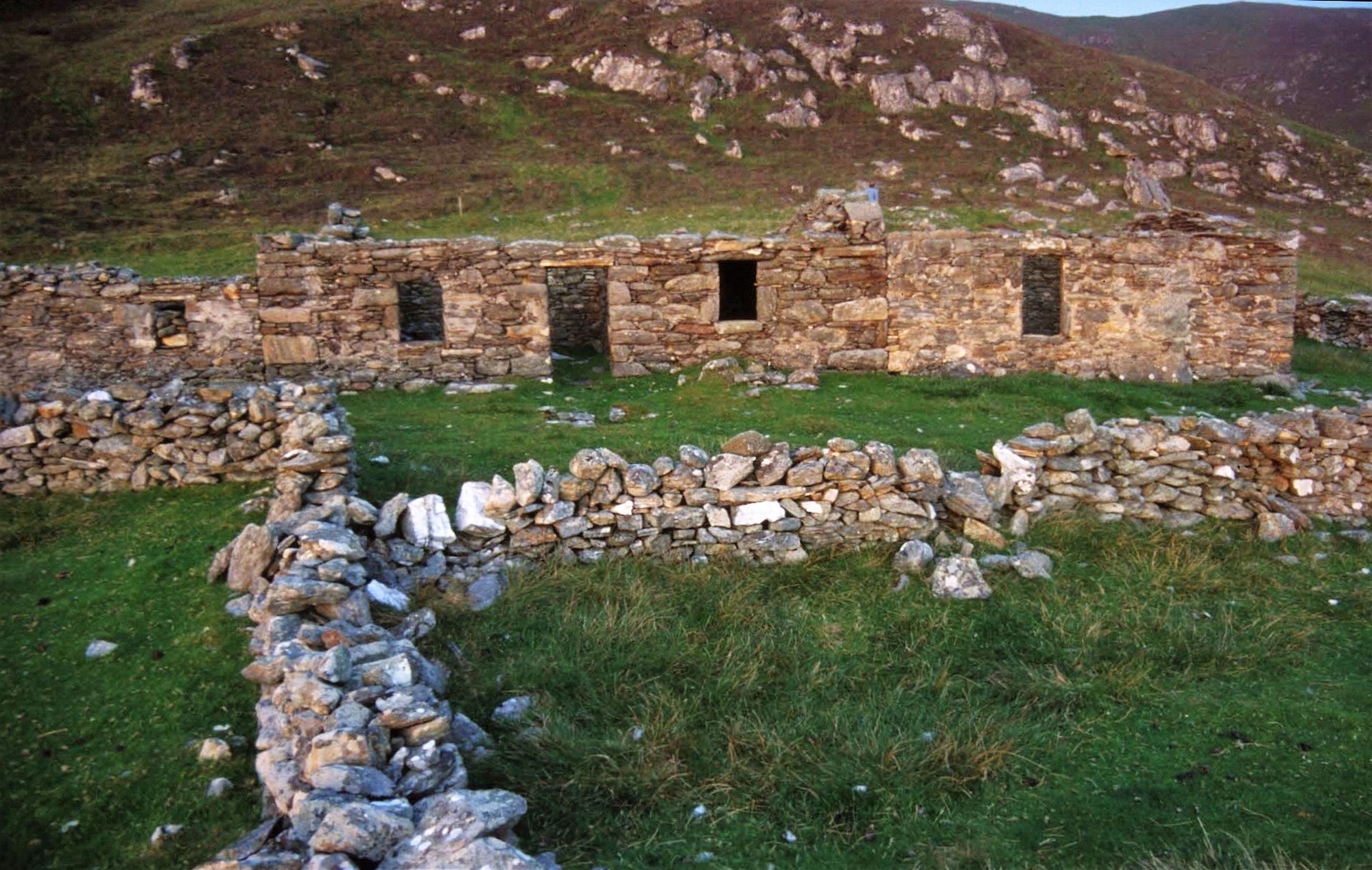
Bool, Collaster, Unst, last occupied in 1909 (Shetland Museum & Archives SL03105)
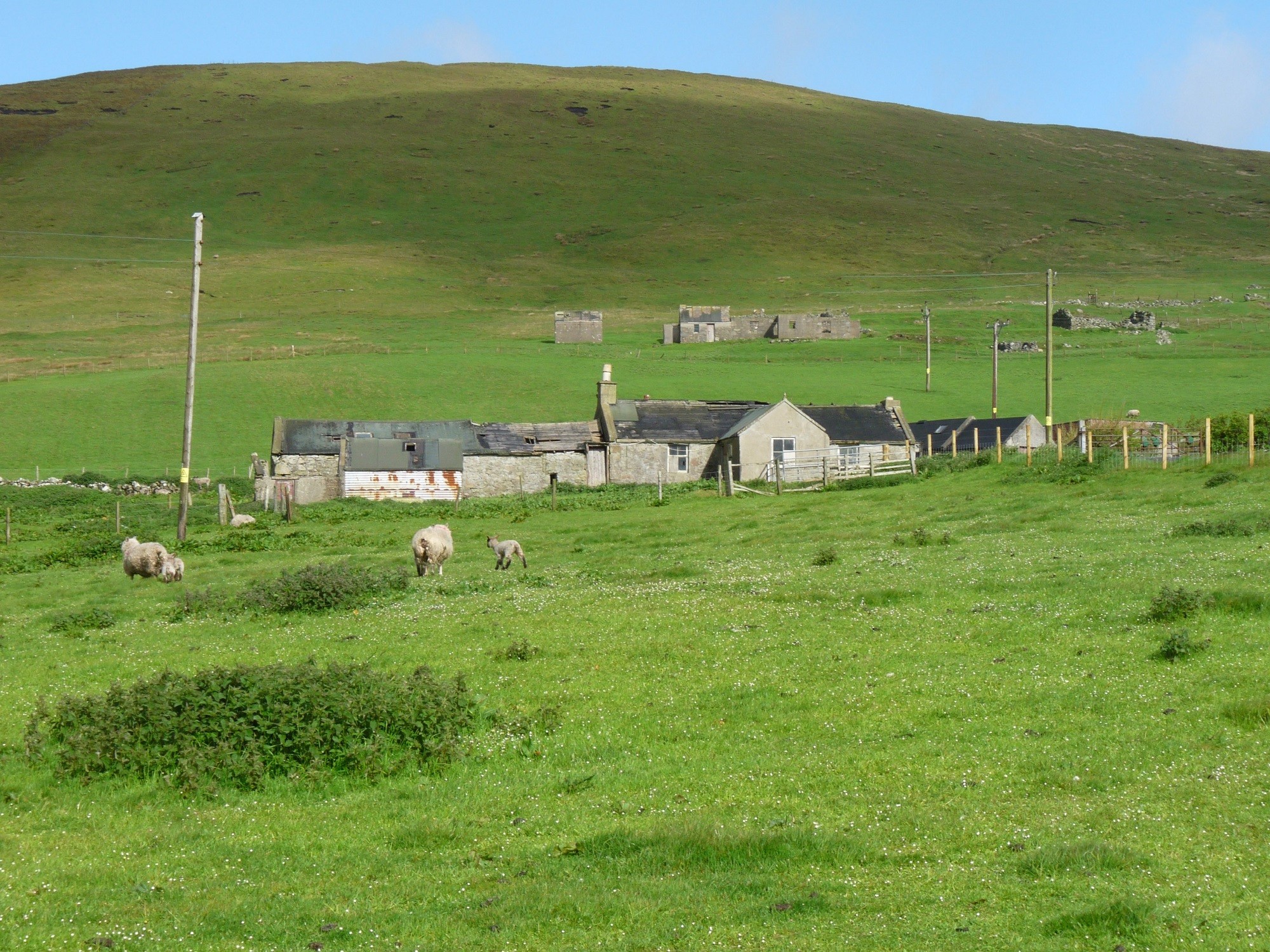
Kálfr, calf, is the root word in Collaster (Unst), Colvister (Yell), Kolvigert (Unst and Whalsay) and Colvadale (Unst). The latter is recorded as Kalfadalr in a land conveyance of 1360. Early records of Setter in Lunnasting render it as Colvasetter, Collasetter and Colvaster. Names that may include the element kýr are Corn Holm in Nesting, Cowgate in Bressay, Couster in Quarff (sometimes recorded as Crouster) and Kuddel in Cunningsburgh. Jakobsen also cites Corwater in Northmavine as a possible kýr name.
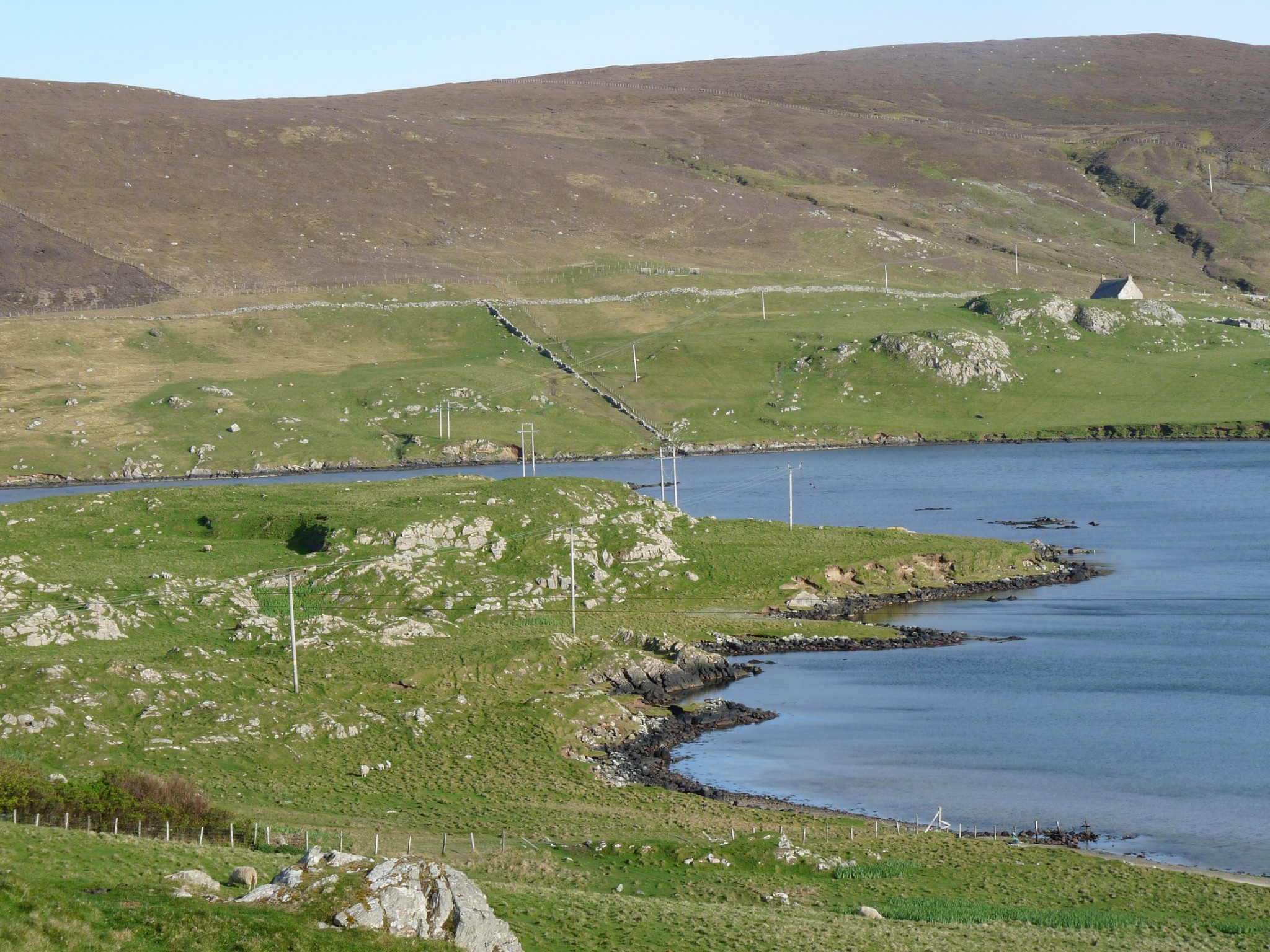
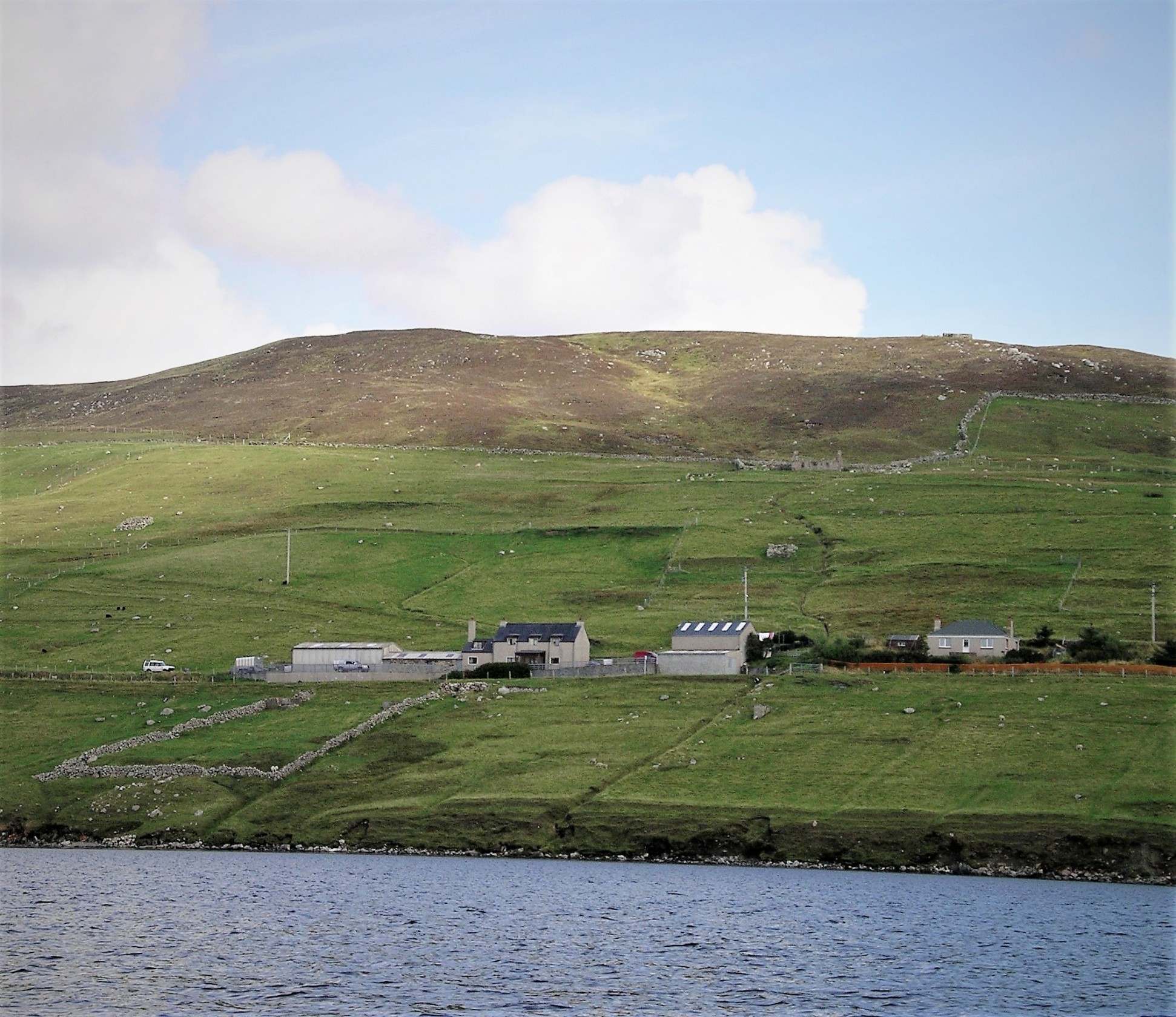
Quoys and hwais from kví, cattle enclosure, are very common throughout the isles, as described in a previous place-name of the week. (insert link) Coo böls were resting places for kye, resulting in many Coubal/Cooböl place-names. There are examples in Unst, Fetlar, Northmavine, Foula, Waas, Sandness, Whalsay, Skerries, Bressay, Burra, Quarff, Cunningsburgh and Dunrossness. Other possible names include Bulba at Scatness from boli meaning a bull, and Noger in Sound, Nothelja, Whalsay and Niddister on the Ness of Hillswick, all from naut , cattle More modern equivalent names appear throughout Shetland; examples include Heifers Gaet, Heifers Grind, Coos Gaet and Coos Grind in Wester Quarff, and Bullock Hols and Bull’s Park in Fair Isle.
If you know any other place-names relating to kye please contact us at placenames@shetlandamenity.org.
Eileen Brooke-Freeman, Shetland Place Names Expert
We hope you have enjoyed this blog.  We rely on the generous support of our funders and supporters to continue our work on behalf of Shetland. Everything we do is about caring for Shetland's outstanding natural and cultural heritage on behalf of the community and for future generations. Donations are welcomed and are essential to our work.
We rely on the generous support of our funders and supporters to continue our work on behalf of Shetland. Everything we do is about caring for Shetland's outstanding natural and cultural heritage on behalf of the community and for future generations. Donations are welcomed and are essential to our work.

